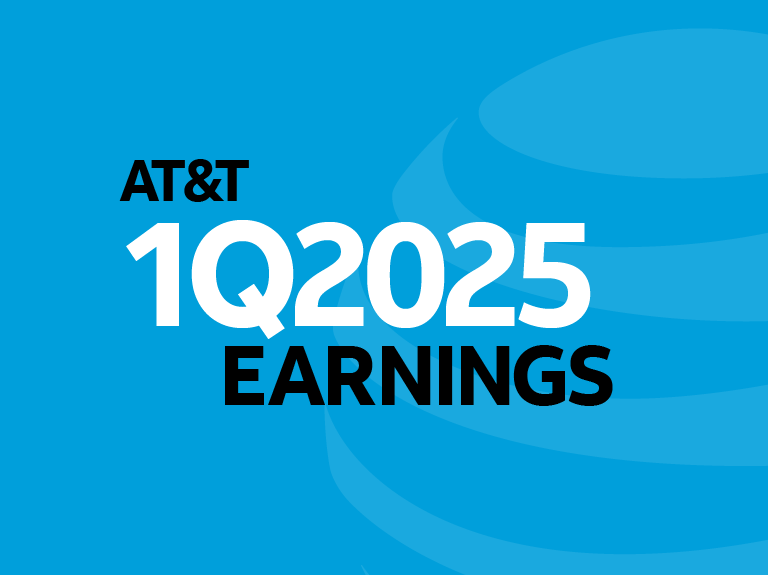AT&T CEO Provides Update to Shareholders
Randall Stephenson, chairman and CEO of AT&T Inc. (NYSE:T), spoke today at the Goldman Sachs Communacopia Conference in New York. While there, he discussed the company’s strategy, including capital allocation, and progress against 2019 priorities.
AT&T Strategy
Stephenson discussed AT&T’s plan to take advantage of two trends: continuous growth in time spent viewing premium content and increases in demand for connectivity and bandwidth. He said the company has the right assets to address these trends at a time when a direct path to the consumer gives content companies a competitive advantage.
Stephenson said that WarnerMedia’s large-scale content creation capabilities matched with AT&T’s vast distribution network across 170 million direct-to-consumer relationships, 5,500 retail stores and 3.2 billion annual customer touches is a powerful combination that positions AT&T to succeed.
Stephenson went on to say that the combination of WarnerMedia’s massive ad inventory with the data provided by AT&T’s large-scale networks offers a significant additional value opportunity, which drove the creation of Xandr.
Capital Allocation and De-leveraging
Stephenson reiterated that AT&T remains confident in its ability to reduce its net debt-to-adjusted EBITDA ratio to the 2.5x range by the end of 2019. The company paid down $9 billion in net debt in the first half of 2019 and has reduced net debt by $18 billion since it closed the Time Warner acquisition. Its progress against this goal gave the company confidence to increase its full-year free cash flow target to $28 billion, a $2 billion increase.
To reach its de-leveraging goal, AT&T plans to use free cash flow after dividends and to continue monetization initiatives, including both asset sales and working capital initiatives, such as collateral agreements. AT&T has already surpassed its monetization goal of a net $6 billion to $8 billion in 2019, with a cumulative total of $9 billion raised year to date — $4 billion from asset sales and $5 billion from working capital and other monetization initiatives. Additional potential asset monetization activity could include the sales of company-owned cell towers in the United States; tower receivables; real estate; and the company's regional sports networks. In addition, European broadcaster CME, of which AT&T owns 75%, has initiated a strategic review that could include a sale of the company.
Stephenson said that given the company’s confidence in reaching its target net debt-to-adjusted EBITDA ratio, investors should expect that share buybacks will be added to the mix of its capital allocation approach. AT&T is not providing guidance on the amounts of share buybacks but says it is a logical move given that that the cash cost of debt is at historically low levels and significantly below the cash cost of equity.
Strong Execution
As John Stephens, the company’s chief financial officer, recently discussed, the company has executed against the priorities it laid out in late 2018 and expects to continue to deliver in the third quarter of 2019.
In the first half of the year, in addition to AT&T’s de-leveraging progress, the company grew wireless service revenues; grew Entertainment Group EBITDA ; remained on track to deliver $700 million in WarnerMedia run-rate synergies in 2019; and led the industry in network performance, 5G deployment and fiber build. GWS has recognized AT&T for having the nation’s best wireless network for two years in a row, and Ookla has ranked AT&T’s network as the fastest for two quarters in a row.
Stephenson said he expects continued progress in the third quarter and beyond. The company expects wireless service revenue growth to continue in the second half of 2019 and that it will achieve its goal of full-year Entertainment Group EBITDA stability. He said the company will also continue to focus on positioning WarnerMedia to be more competitive in an industry being reshaped by consolidation and technology. As WarnerMedia focuses on the launch of HBO Max in spring 2020, AT&T expects to accelerate investment and the development of new content. And AT&T plans to continue to invest in its network. The company’s FirstNet build was already 9 months ahead of schedule at the end of the second quarter, and AT&T expects to reach 70% Band 14 coverage by the end of the year. AT&T has 5G mmWave in parts of 21 cities today and plans to be in parts of 29 cities by the end of 2019 with nationwide 5G coverage using sub-6 GHz spectrum by the first half of 2020.
AT&T has also been working to reduce costs. In addition to its ongoing work to manage content costs, the company has been focused on network virtualization. Stephenson said these efforts have resulted in about 17 consecutive quarters of lower network costs. The company expects 75% of its network functions to be virtualized by the end of 2020.
AT&T announces third-quarter 2019 results on Wednesday, October 23 followed by WarnerMedia Day in Los Angeles on October 29. The company’s second-quarter 2019 results are available here.


